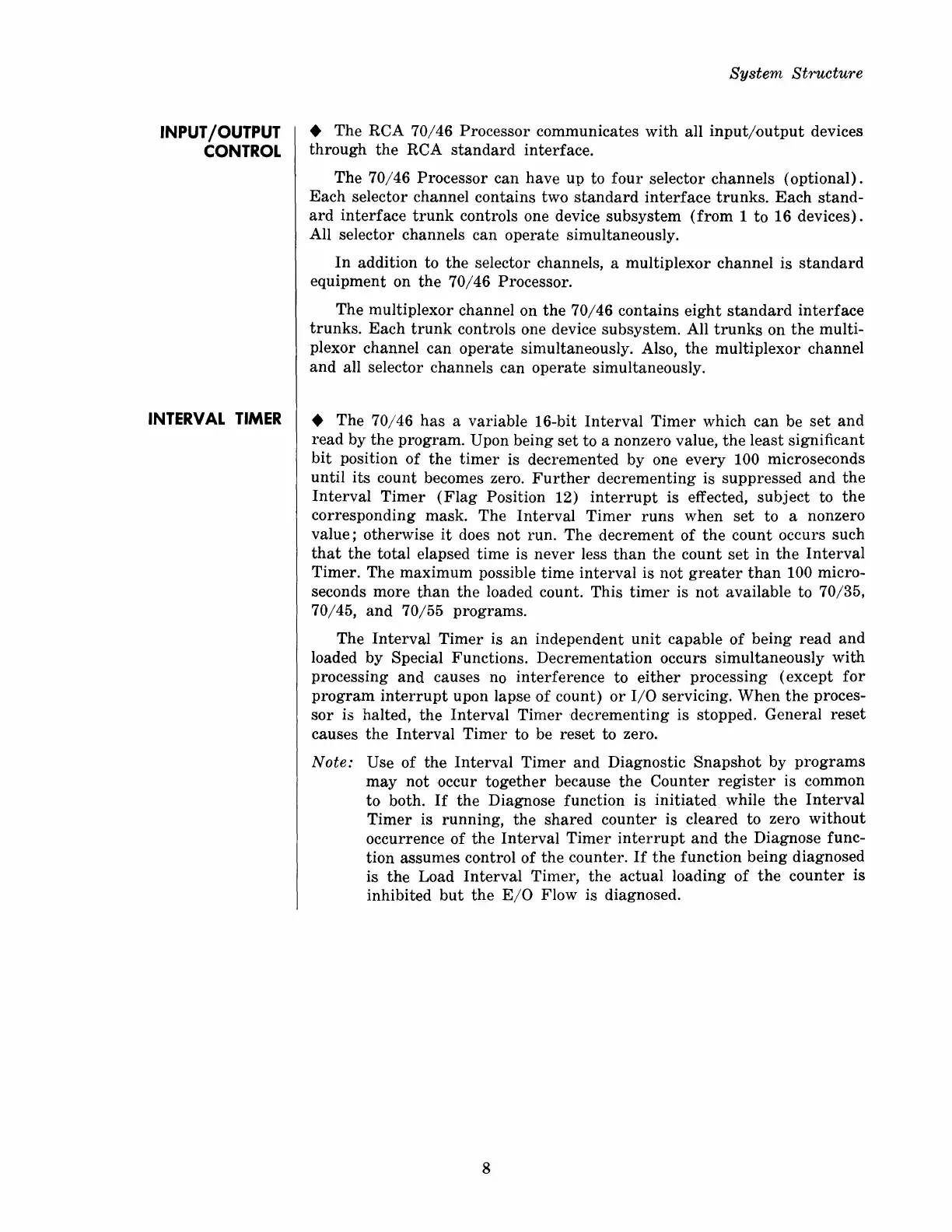INPUT
/OUTPUT
CONTROL
INTERVAL
TIMER
System
Structure
• The RCA 70/46 Processor communicates
with
all
input/output
devices
through
the
RCA
standard
interface.
The
70/46
Processor can have
up
to
four
selector channels
(optional).
Each
selector channel contains two
standard
interface
trunks.
Each
stand-
ard
interface
trunk
controls one device subsystem
(from
1 to 16 devices).
All selector channels can operate simultaneously.
In
addition to
the
selector channels, a multiplexor channel is
standard
equipment on
the
70/46
Processor.
The multiplexor channel on
the
70/46
contains
eight
standard
interface
trunks.
Each
trunk
controls one device subsystem. All
trunks
on
the
multi-
plexor channel can
operate
simultaneously. Also,
the
multiplexor
channel
and
all selector channels can
operate
simultaneously.
• The 70/46
has
a variable 16-bit
Interval
Timer
which can be
set
and
read
by
the
program. Upon being
set
to a nonzero value,
the
least significant
bit
position
of
the
timer
is decremented by one every 100 microseconds
until
its
count becomes zero.
Further
decrementing is suppressed
and
the
Interval
Timer
(Flag
Position 12)
interrupt
is effected,
subject
to
the
corresponding mask.
The
Interval
Timer
runs
when
set
to a nonzero
value; otherwise
it
does
not
run. 'The
decrement
of
the
count occurs such
that
the
total elapsed time is
never
less
than
the
count
set
in
the
Interval
Timer. The
maximum
possible
time
interval
is
not
greater
than
100 micro-
seconds more
than
the
loaded count. This
timer
is
not
available to 70/35,
70/45,
and
70/55 programs.
The
Interval
Timer
is
an
independent
unit
capable
of
being
read
and
loaded by Special Functions. Decrementation occurs simultaneously
with
processing
and
causes no
interference
to
either
processing (except
for
program
interrupt
upon lapse
of
count)
or
I/O
servicing.
When
the
proces-
sor
is halted,
the
Interval
Timer
decrementing
is stopped. General
reset
causes
the
Interval
Timer
to be
reset
to zero.
Note: Use
of
the
Interval
Timer
and
Diagnostic
Snapshot
by
programs
may
not
occur
together
because
the
Counter
register
is common
to
both.
If
the
Diagnose function is
initiated
while
the
Interval
Timer
is running,
the
shared
counter
is cleared to zero
without
occurrence
of
the
Interval
Timer
interrupt
and
the
Diagnose func-
tion assumes control
of
the
counter.
If
the
function being diagnosed
is
the
Load
Interval
Timer,
the
actual loading
of
the
counter
is
inhibited
but
the
E/O
Flow is diagnosed.
8

